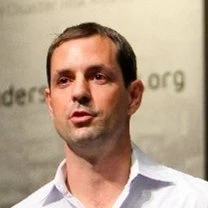
The number of natural disasters has nearly doubled in the last three decades, with the cost of these events increasing substantially– from around $50 billion annually in the 1980’s to just under $200 billion a year in the last decade, with extreme weather events responsible for nearly three-fourths of these losses.
One reason is population growth, 95 percent of which is happening and will continue to happen in developing countries. Another is rapidly expanding cities. Growing stress on infrastructure, utilities, and housing will only exacerbate risks and undo decades of achievements in development and increase the burden on humanitarian efforts.
This will be part of the discussions of the delegates from 188 member countries arriving for the World Bank-IMF Spring Meetings in Washington, D.C., this week. Getting serious about climate change and ensuring the sustainability of the World Bank Group’s efforts to end poverty will require a new framework for development and humanitarian efforts in the coming years.
To help shape and refine this framework, the World Bank-managed Global Facility for Disaster Reduction and Recovery (GFDRR) is preparing to host – together with the European Union, the Government of Japan, and USAID – the 6th Resilience Dialogue. In this round, policymakers from developing and donor countries will explore how a changing world requires a new approach to development action and rising humanitarian needs.
Currently, less than 13% of disaster-related assistance (or about 0.4% of all development aid) is invested in prevention and preparedness. Unless we move towards a culture of resilience, growing disaster needs and protracted humanitarian crises will further outpace our collective resources, hampering our goals for shared and secured prosperity around the world.
There is a need to scale up tried and tested approaches – such as infrastructure retrofitting, urban drainage, and emergency shelters – while also investing in innovative solutions including new risk assessment techniques and financial protection mechanisms.
The Government of Japan and the World Bank recently launched a $100 million program and Tokyo Disaster Risk Management (DRM) Hub which will contribute to that goal. Implemented by GFDRR, this program will help mainstream climate and disaster risk management across the World Bank’s operations.
Over the last four years, the World Bank’s activities in disaster risk management have grown 20 percent every year, reaching nearly $4 billion in 2013. The vast majority (almost 85 percent) of our country assistance strategies now incorporate disaster risk management and climate risk analysis. Even still, the institution is working hard on new, more effective ways to further disaster and climate risk reduction – both internally and on the global stage.
The Resilience Dialogue is a small but important part of these efforts, and provides a unique opportunity to bring together voices from our many partners as we look to build resilience and work towards a safer future.
You can add your voice to the conversation by sending your questions for the speakers to resilience.dialogue@gmail.com or via twitter @GFDRR #resilience.
Watch the event live at 5:30 p.m. EDT on Friday, April 11.


Join the Conversation